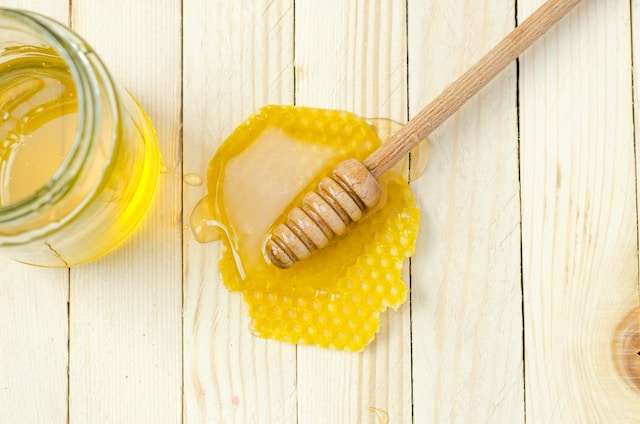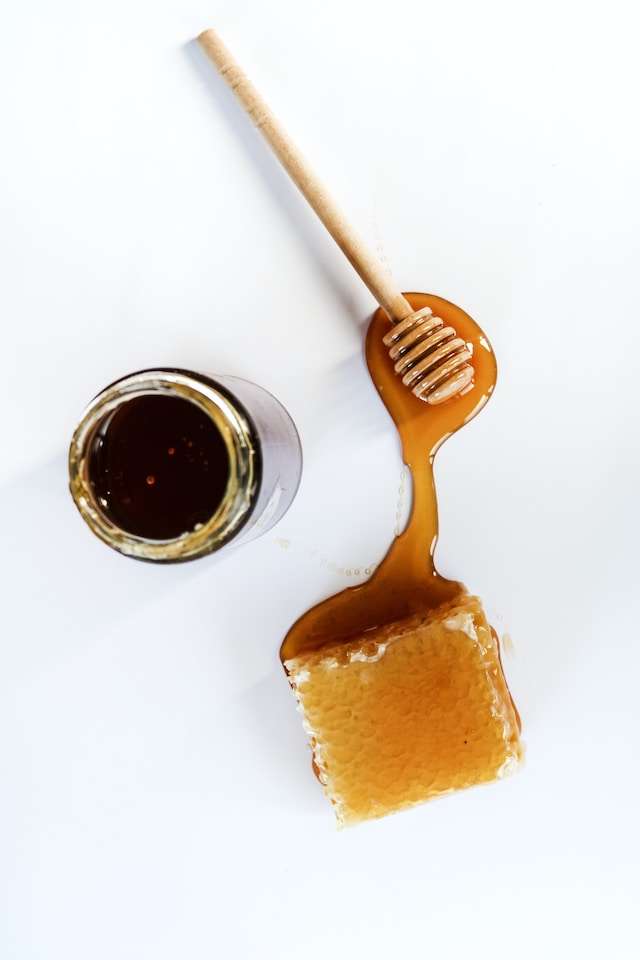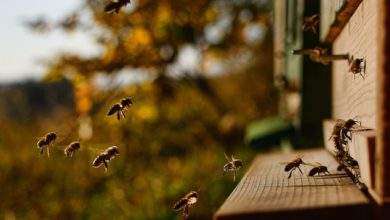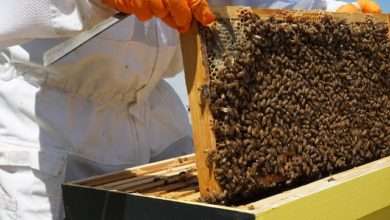Should You Invest in an Electric Honey Extractor

Learn what to consider when shopping for one, the benefits of using one, and the cost associated with electric honey extractors. Be better informed and get the right machine for you.
Exploring the World of Honey Extraction
In recent years, there has been a significant surge of interest in beekeeping worldwide. As more people become aware of the vital role bees play in our ecosystem and the alarming decline in their populations, individuals are enthusiastically taking up beekeeping as a hobby, a means of promoting biodiversity, and even as a potential source of income. on the intricate process of obtaining this beloved golden elixir from honeybee hives.
Introduction to Honey Extraction
Honey extraction refers to the process of obtaining honey from beehives. It is a fascinating endeavor that allows beekeepers to harvest the fruits of their honeybees’ labor and share in the delicious rewards. The extraction process typically takes place once or twice a year, depending on the climate, regional variations, and the strength of the bee colonies.
The Step-by-Step Guide to Honey Extraction
1. Preparation: Before the honey extraction can take place, it is crucial to make adequate preparations. This involves gathering the necessary equipment, including a honey extractor (a device designed for honey extraction), uncapping tools (such as electric knives or uncapping forks), buckets, sieves, and containers for storing the honey. It is also essential to ensure a clean and sanitized environment to maintain the purity of the honey.
2. Timing the Harvest: Timing plays a vital role in honey extraction. Beekeepers must consider environmental factors, floral availability, and the strength of the honeybee colonies. Harvesting honey at the right time ensures optimal flavor and quality.
3. Removing the Supers: Honey extraction begins by removing the supers, which are the top boxes placed above the main hive bodies. These supers contain honeycombs filled with honey, and their removal allows access to the honey for extraction.
4. Uncapping the Comb: Once the supers are removed, the next step involves uncapping the honeycombs. Uncapping is the process of removing the thin layer of beeswax that seals the cells containing honey. This can be accomplished using various tools, such as an electric uncapping knife or an uncapping fork.
5. Extracting the Honey: After uncapping, the honeycombs are placed inside a honey extractor—a mechanical device that uses centrifugal force to extract honey from the comb. The honey extractor works by spinning the frames inside, causing the honey to be flung out towards the walls of the extractor. It then drips down to the bottom and collects in a container.
6. Straining and Storing: Once extracted, the honey is strained to remove any residual wax or impurities. This ensures a smooth and clear final product. The strained honey is then carefully transferred to clean, airtight containers for storage. Proper storage is essential to preserve the quality, taste, and freshness of the honey.
The Importance of Honey Extraction
Honey extraction is not just a means of obtaining a delicious, natural sweetener; it is a crucial step in the overall management of bee colonies. By extracting honey responsibly, beekeepers allow their honeybees to maintain a healthy and sustainable hive.
Honey removal helps prevent overcrowding within the colony, encourages bees to store more nectar, and provides the beekeeper with surplus honey to share or sell.
Moreover, honey extraction serves as a wonderful opportunity for beekeepers to connect with nature and deepen their understanding of these incredible pollinators. It allows individuals to appreciate the intricate process through which honeybees transform nectar into the delectable golden treat we all love.
Understanding the Electric Honey Extractor
Here we provide a comprehensive understanding of what an electric honey extractor is and how it differs from traditional manual extractors.

Definition and Function
An electric honey extractor is a mechanical device designed to extract honey from honeycombs without damaging them. It operates by utilizing centrifugal force to separate honey from the comb, allowing beekeepers to collect honey efficiently.
Powered by electricity, this extractor relies on a motor to rotate its frame and spin the honeycombs, expelling honey through the force of gravity.
Every electric honey extractor consists of a barrel-like drum or container, where the frames containing honeycombs are placed, and a lid to secure it during operation. The frames are attached to radial arms or baskets inside the extractor, which spin when the motor is activated. As the frames spin rapidly, the honey is flung to the sides of the drum due to centrifugal force, eventually flowing downwards into the bottom where it can be collected.
How it Differs from Traditional Manual Extractors
1. Efficiency and Extraction Speed:
One significant advantage of electric honey extractors over traditional manual extractors is their efficiency and extraction speed. Manual extractors require beekeepers to manually spin the frames, which can be time-consuming and physically demanding, especially when dealing with larger quantities of honeycombs. In contrast, electric extractors, powered by a motor, enable rapid spinning, allowing for quick extraction and increased productivity.
2. Convenience and Reduced Effort:
Using an electric honey extractor eliminates the need for excessive physical labor. Manual extractors often demand significant effort and energy, requiring beekeepers to continuously rotate the frames by hand.
Electric extractors, on the other hand, only require the beekeeper to load the frames, secure the lid, and turn on the motor. This convenience reduces fatigue and strain, making honey extraction a more enjoyable experience.
3. Preservation of Honeycomb Integrity:
Another crucial distinction is how electric honey extractors preserve the integrity of honeycombs. Traditional manual methods involve uncapping the combs and using tools like forks or knives to detach the honey.
In the process, these manual techniques can potentially damage and distort the delicate honeycomb. On the contrary, electric honey extractors gently extract honey without compromising the comb structure, ensuring its reusability by the honeybees.
Benefits of Investing in an Electric Honey Extractor
Here we will explore the various benefits associated with investing in an electric honey extractor, highlighting the advantages of increased efficiency, reduced physical labor, and the ability to extract larger quantities of honey.
- Increased Efficiency and Time-Saving Advantages:
One of the primary benefits of utilizing an electric honey extractor is the significant increase in efficiency it offers. Unlike traditional manual extractors, electric extractors are equipped with powerful motors that automate the extraction process.
This automation eliminates the need for labor-intensive hand cranking, allowing beekeepers to extract honey rapidly and effortlessly. The speed at which an electric extractor operates ensures that beekeepers can process larger volumes of honey in much shorter timeframes, ultimately increasing productivity.
- Reduction in Physical Labor:
Extracting honey manually can be a physically demanding and time-consuming task. Beekeepers often find themselves spending hours turning the handle of a manual extractor to extract honey from the combs.
However, with the advent of electric honey extractors, the physical labor involved in this process has been significantly reduced. The electric motor does the heavy lifting, simplifying the task for beekeepers and sparing them from the grueling physical exertion that manual extraction requires.
This reduction in physical labor not only improves the beekeeper’s overall well-being but also allows them to allocate their time and energy to other essential aspects of beekeeping.
- Extraction of Larger Quantities of Honey:
The capacity to extract larger quantities of honey is yet another compelling reason to invest in an electric honey extractor. With its efficient motor and advanced spinning mechanism, an electric extractor can process a greater volume of honeycombs in a single extraction cycle.
This capability translates into a higher yield of honey, which is particularly beneficial for commercial beekeepers aiming to maximize their production. The ability to extract larger quantities of honey efficiently opens up opportunities for expansion and growth within the beekeeping operation
How an Electric Honey Extractor Works
Now, we will explore the intricate workings of an electric honey extractor, providing an explanation of the extraction process, an overview of its key components, and essential safety considerations.
Explanation of the extraction process:
To understand how an electric honey extractor works, it’s important to grasp the extraction process itself. The electric honey extractor operates based on the principle of centrifugal force, utilizing a spinning drum or basket where honey-filled frames are placed.
The process can be broken down into the following steps:
- Frame Preparation: Before extraction, beekeepers remove honey-filled frames from the beehive and scrape off excess beeswax and propolis. This ensures the honey extraction process is not hindered.
- Loading Frames: The prepared frames are then loaded inside the electric honey extractor’s drum or basket. It is crucial to handle the frames with care to avoid damaging the delicate honeycombs.
- Spinning Action: Once the frames are securely placed, the electric honey extractor initiates its spinning action. The drum or basket rotates at high speeds, creating centrifugal force that flings the honey out of the comb’s cells.
- Honey Collection: As the honey is expelled from the cells, it collects at the bottom of the extractor’s drum. From there, it is directed towards an outlet or tap, allowing beekeepers to collect the precious honey conveniently.
- Reversal and Repeat: After the initial extraction, the frames are reversed to extract honey from the opposite side. This ensures maximum extraction efficiency and prevents damage to the honeycomb during subsequent extraction cycles.
Overview of the key components and their functions:
An electric honey extractor consists of several key components, each serving a critical function in the extraction process. Understanding these components will provide insight into the machine’s inner workings.
Here are the primary components:
- Drum or Basket: This cylindrical container holds the honeycomb frames and provides the spinning motion necessary for honey extraction. Its size can vary to accommodate different frame capacities.
- Electric Motor: The extractor is powered by an electric motor, which drives the spinning action of the drum or basket. The motor’s power and speed control can vary depending on the specific model.
- Frame Holder: To secure the frames during extraction, the electric honey extractor is equipped with a frame holder. This component ensures the frames remain in place while withstanding the centrifugal forces.
- Legs and Stand: Providing stability and elevation to the extractor, the legs and stand ensure a safe and comfortable working height for beekeepers during extraction.
Safety considerations:
While operating an electric honey extractor, it’s crucial to prioritize safety at all times.
Here are some essential safety considerations to keep in mind:
- Familiarize Yourself: Before using an electric honey extractor, thoroughly read and understand the manufacturer’s instructions and safety guidelines to ensure proper operation.
- Protective Gear: Beekeepers should wear appropriate protective gear, including a beekeeping suit, gloves, and a veil to protect against stings and potential honey spillage.
- Stability: Ensure that the electric honey extractor is placed on a stable surface to prevent tipping or accidents during the spinning process.
- Electrical Safety: As the extractor is electrically powered, it is important to inspect the electrical connections for any potential faults or damages. Always plug the device into a grounded outlet for safe operation.
- Frame Inspection: Prior to loading frames, thoroughly examine them for any signs of damage or weakness. Damaged frames may not endure the spinning forces and could lead to accidents or incomplete extraction.
Considerations for Investing in an Electric Honey Extractor
Investing in an electric honey extractor can greatly streamline the honey extraction process and enhance productivity for beekeepers. However, before making a purchase, it is essential to consider several factors to ensure a wise investment.
Here, we will explore the key considerations that should be evaluated when investing in an electric honey extractor.
Cost Analysis
Initial Investment:
- The price range of electric honey extractors can vary significantly based on their size, capacity, and features.
- Consider your budget and select a model that provides the desired functionality without compromising on quality.
Operating Costs:
- Apart from the initial investment, it’s crucial to assess the ongoing expenses involved in owning an electric honey extractor.
- Consider factors such as electricity consumption, replacement parts, and regular maintenance requirements.
Space Requirements
Physical Space:
- Evaluate the available space in your beekeeping facility to ensure it can accommodate the electric honey extractor.
- Consider the dimensions and weight of the equipment, allowing ample room for easy operation, maintenance, and storage.
Ventilation and Safety:
- Electric honey extractors generate heat during operation, so it is essential to place them in a well-ventilated area to prevent overheating.
- Ensure the space is equipped with adequate safety measures such as fire extinguishers and sufficient clearance from other equipment.
Skill Level and Experience Needed
Familiarity with Extractor Operation:
- Assess your familiarity with electric honey extractors and their operation.
- If you are new to using an electric extractor, consider opting for user-friendly models with clear instructions and intuitive controls.
Understanding Honey Extraction Process:
- Having prior knowledge of the honey extraction process is essential to make optimal use of an electric honey extractor.
- Familiarize yourself with techniques such as uncapping frames, spinning, and filtering honey to ensure efficient operation.
Maintenance and Troubleshooting
Regular Maintenance:
- Proper and regular maintenance is crucial to prolong the lifespan of your electric honey extractor.
- Familiarize yourself with the manufacturer’s guidelines regarding cleaning, lubrication, and inspection intervals.
Troubleshooting:
- Consider the availability of technical support and spare parts for the chosen electric honey extractor.
- Familiarize yourself with common troubleshooting steps to address any issues promptly and avoid prolonged downtime.
The Environmental Impact of Electric Honey Extractors
In recent years, the environmental impact of various industries has come under scrutiny, prompting a shift towards more sustainable practices. The beekeeping industry is no exception, as it strives to reduce its carbon footprint and contribute to a greener future.
Here, we will explore the environmental benefits of electric honey extractors and their impact on sustainability.
Comparison of Environmental Benefits
- Energy Efficiency: One of the key advantages of electric honey extractors is their energy efficiency compared to traditional manual extraction methods. These machines are designed to extract honey from combs in a more efficient manner, utilizing lower amounts of energy in the process. By minimizing energy consumption, electric honey extractors help conserve valuable resources and reduce greenhouse gas emissions.
- Reduced Waste: Electric honey extractors also play a crucial role in reducing waste generated during honey extraction. These machines allow beekeepers to extract honey from the combs without damaging them, ensuring that they can be reused by the bees in the hive. By preserving the integrity of the combs, electric honey extractors contribute to the sustainable management of bee colonies and minimize unnecessary waste.
- Minimal Bee Stress: Manual honey extraction often involves physically removing bees from the combs, causing stress and disruption to the hive. In contrast, electric honey extractors provide a gentler approach by utilizing centrifugal force to extract honey from the combs without disturbing the bees. This method helps maintain a harmonious relationship between beekeepers and their colonies, promoting overall bee well-being and productivity.
Electricity Usage and Sustainability
- Renewable Energy Sources: To ensure the sustainability of electric honey extractors, it is essential to consider the source of the electricity used to power these machines.
Beekeepers are encouraged to shift towards renewable energy sources such as solar or wind power. By harnessing clean energy, beekeepers can minimize their carbon footprint and contribute to a greener energy grid.
- Energy Conservation: Although electric honey extractors offer efficiency benefits, it is important for beekeepers to be mindful of their electricity usage.
Implementing energy conservation practices, such as running the extractors during off-peak hours or utilizing energy-saving features, can further enhance the sustainability of these machines. By reducing unnecessary energy consumption, beekeepers can minimize their environmental impact and promote a more sustainable beekeeping industry.
Conclusion
Investing in an electric honey extractor can be a game-changer for beekeepers, streamlining the honey extraction process and enhancing productivity.
By carefully analyzing the cost, space requirements, skill level, and maintenance aspects, beekeepers can choose an electric honey extractor that best fits their needs. Remember, a well-informed investment can result in long-term benefits, simplifying your honey extraction process and improving overall efficiency.

FAQ
What is an Electric Honey Extractor and What Does it Do?
- An electric honey extractor is exactly what it sounds like – it’s a machine that is used to extract honey from beehives. While the traditional method of honey extraction involves a beekeeper manually separating the wax frames from the honey, an electric honey extractor does it electronically. In most cases, the process involves a mechanism that mixes and force out the honey. This process is also often referred to as “spinning” the honey.
What are the Benefits of Using an Electric Honey Extractor?
- The obvious benefit to using an electric honey extractor is that it’s much faster than manual extraction. It also offers a cleaner, more efficient way to extract honey. The electricity also keeps the honey warm as it’s being extracted, which can help retain some of the flavor and aroma of the honey.
- Additionally, electric honey extractors generally use less electricity than traditional methods. Finally, electric honey extractors reduce the risk of wax build-up in the hives, which can be a problem with traditional extraction.
Can I use an electric honey extractor as a beginner beekeeper?
- Absolutely! An electric honey extractor is suitable for beekeepers at any level of experience. While it may require a higher initial investment compared to manual extractors, it offers ease of use, efficiency, and helps maximize honey yield. It can greatly simplify the extraction process, making it more enjoyable for beginners.
How much honey can I extract with an electric honey extractor?
- The amount of honey you can extract depends on various factors, such as the number of frames the extractor can accommodate and the size of the frames themselves. Generally, electric honey extractors can handle multiple frames simultaneously, allowing you to extract larger quantities of honey compared to manual methods.
Is it difficult to clean an electric honey extractor?
- Not at all. Electric honey extractors are designed to be easy to clean. Most models have removable parts that can be disassembled, making it convenient to clean each component thoroughly. Regular cleaning after each use helps maintain the extractor’s efficiency and extends its lifespan.
Can I use an electric honey extractor with any type of honeycomb frame?
- Yes, electric honey extractors are typically compatible with various types of honeycomb frames. It is important to ensure that the frames fit securely and properly within the extractor drum to minimize any potential damage during the extraction process.
Are electric honey extractors noisy?
- While electric honey extractors do emit some noise due to the operation of the motor, most models are designed to minimize disturbances. Some extractors come with noise-reducing features or insulation to ensure a quieter working environment.
Can I extract honey without damaging the honeycomb using an electric honey extractor?
- Yes, an electric honey extractor is specifically designed to extract honey without causing significant damage to the honeycomb frames. The centrifugal force gently removes the honey, allowing you to reuse the intact comb for future beekeeping activities.
How Much Does an Electric Honey Extractor Cost?
- The cost of an electric honey extractor will vary, depending on the model, type, and size. Generally, you can expect to pay anywhere from about five hundred dollars to a few thousand dollars for a decent-quality electric honey extractor. American-made honey extractors, such as Maxant or Dadant usually start around eight hundred dollars.
What Should I Look for When Shopping for an Electric Honey Extractor?
- When shopping for an electric honey extractor, it’s important to consider both the quality and price. Be sure to look at the overall build quality, and check to make sure the parts fit together properly.
- It’s also a good idea to check out customer reviews to get an idea of how reliable and efficient the extractor is. You should also check to see if the manufacturer offers any warranty or guarantee on the machine.
- Finally, it’s important to make sure that the electric honey extractor you’re considering has enough power to handle your needs. If you’re only going to be extracting a couple of frames at a time, a smaller machine should be sufficient. However, if you’re going to be doing larger runs, you’ll obviously need a more powerful and larger electric honey extractor.
Are electric honey extractors worth the investment?
- Investing in an electric honey extractor can be highly beneficial for beekeepers, particularly those with larger beekeeping operations. It saves significant time and effort, enhances honey extraction efficiency, and helps maintain the integrity of the frames. Ultimately, it leads to improved honey quality and greater productivity. However, the decision to invest would depend on individual needs, scale of operations, and budget considerations.




